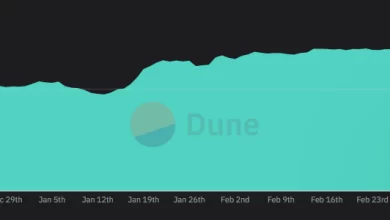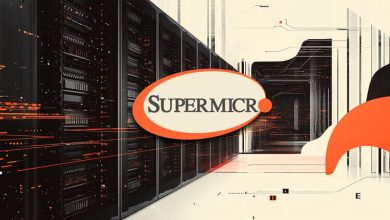Win SEO in the Age of LLMs: Strategies for AI Visibility

Search is going through another evolution—and this time, it’s more than just another algorithm update. With the rise of Large Language Models (LLMs) like OpenAI’s GPT, Google’s Gemini, and Meta’s LLaMA, the way people find and interact with information is changing rapidly. These advanced models are being woven into search experiences, voice assistants, and everyday digital tools. We’re moving past the era of simply ranking in the top ten blue links; now, the real win is becoming part of the answer itself.
So, how do we pivot our SEO strategies to thrive in this new environment where AI can generate, summarize, and sometimes cite our content? In this article, we’ll explore how SEO experts can position their content to stay relevant in the age of LLMs, with a practical blend of strategy, technical enhancements, and AI-aware content design.
Know How LLMs Interpret
The first step to optimizing for LLMs is understanding how they work. These models are trained on a vast pool of public content, from blogs and academic articles to forums and documentation. They learn patterns, context, and associations—not in real time, but from training data.
That said, newer tools like ChatGPT with browsing and Perplexity.ai introduce a hybrid model, combining language generation with real-time retrieval. That means your content could be retrieved live and cited in responses. For SEO, this changes the goal: it’s not just about where you rank, but whether your content is authoritative, clear, and relevant enough to be selected by an AI to support its answers.
What LLMs Tend to Prioritize When Reading Content
Based on hands-on testing with tools like ChatGPT (Browse), Bing Copilot, Google’s AI Overviews, and Perplexity, here’s what I’ve noticed consistently works when it comes to structuring content that performs well in AI-powered search environments:
-
Clear Heading Structure: LLMs rely heavily on H1, H2, and H3 tags to understand content hierarchy. Pages that use consistent and meaningful headings are easier for these models to interpret, unlike pages cluttered with complex layouts or poor HTML structure.
-
Concise, Purposeful Paragraphs: Keep your paragraphs short and focused. LLMs are much better at extracting value from clear, self-contained points than they are at digging through long blocks of text. Stick to one idea per paragraph where possible.
-
Use of Structured Elements (Lists, Tables, FAQs): Formats like bullet points, numbered lists, tables, and FAQ sections are incredibly effective. Not only do they help readers scan quickly, but they also increase the chances of your content being pulled into featured snippets or AI-generated answers.
-
Clear Topic Definition Early On: Get to the point. Summarize the value or objective of your content near the top. Don’t bury useful information under long intros or brand fluff—models (and users) will often skip past it.
-
Semantic Signposting Throughout the Text: Phrases like “in summary,” “key takeaway,” “step-by-step,” and “a common mistake is…” act as signposts for models and readers alike. They help structure the content and make it easier to extract meaning and relevance. There’s a reason AI-generated content uses them so often—it works. And frankly, many human-written pages could benefit from applying the same clarity and structure.
Optimize for Retrieval-Augmented Generation (RAG) Systems
Retrieval-Augmented Generation (RAG) in SEO refers to a process where AI systems, like ChatGPT with web browsing or Perplexity.ai, combine traditional search engine retrieval with language generation to deliver more accurate, up-to-date, and context-rich responses. Unlike static LLMs that rely solely on their training data, RAG models actively search the web in real time, retrieve relevant documents or web pages, and then generate an answer based on both the retrieved content and their own understanding. Why it matters for SEO: In a RAG-powered environment, your content isn’t just competing for rankings on a results page—it’s competing to be retrieved and cited in real-time answers generated by AI. That means SEO strategies must now focus on: Clear, structured content that directly answers common questions.
To stand out in this environment, you need content that:
- Directly and clearly answers common queries
- Uses schema markup and credible author signals
- Stays fresh and updated regularly
- Matches a variety of semantically similar questions
FAQs, how-to guides, and crisp definitions are especially powerful in RAG-based systems. Structure your pages so they can easily be understood, retrieved, and used in AI-generated summaries.
Optimize for Multimodal AI Understanding
When we talk about content, it’s important to remember it’s not just about text. Content comes in many forms—videos, infographics, tools, interactive elements, and more. Before creating anything, take the time to understand user intent by analyzing how people search in both traditional search engines and LLMs. This insight helps you determine which content format will be most useful and engaging for your audience based on what they’re really looking for. Matching the content type to the intent is key to driving performance.
As an SEO expert, it’s important to recognize that LLMs are evolving rapidly—they’re no longer just processing plain text. Today’s models are increasingly capable of interpreting images, videos, and even audio content as part of the overall user experience. That means your SEO strategy needs to go beyond optimizing copy. It’s time to take video SEO, image SEO, and audio SEO seriously:
-
Add descriptive alt text to all images
-
Use schema markup for visual and video content
-
Provide captions and transcripts for video
-
Use descriptive images for podcast and videos
These simple steps help AI understand and contextualize all elements on your page, not just the text.
Build Content for AI Summarization
AI systems prioritize content that is structured, educational, and easy to distill. Think in blocks: clear headlines, short paragraphs, logical sections.
Best practices include:
- Use H2 and H3 headers to divide topics
- Use a clear table of contents and intuitive navigation to enhance readability and user experience in comprehensive articles.
- Write in an instructional or teaching tone
- Include synonyms, LSI and related terms
- Add your own examples, case studies, or data
The easier it is for an LLM to summarize your content accurately, the more likely you are to be featured in AI answers.
Use Structured Data to Define Entities and Context
Schema markup is no longer optional. It provides machines with the context they need to understand your content’s structure, meaning, and relevance.
Add schema types like:
- FAQPage and QAPage for question-answer relevance
- Article, WebPage, Author, and Organization
- Use sameAs to connect your content to Wikidata or LinkedIn profiles
Doing this helps LLMs make clear associations between your content and trusted, verifiable sources.
Build Deep Topical Authority
Topical authority in SEO refers to a website’s perceived expertise, depth, and trustworthiness on a specific subject area. When a site consistently publishes high-quality, comprehensive content around a particular topic, search engines (and increasingly, AI systems) recognize it as an authoritative source for that topic. This boosts the site’s chances of ranking higher in search results and being referenced by Large Language Models (LLMs) like ChatGPT or Gemini. AI systems rely on established sources when summarizing information. If your site thoroughly covers a topic and demonstrates long-term expertise, you’re far more likely to be referenced. Strategies to Strengthen Authority: Create content clusters: Write multiple interlinked articles around a core topic, covering all its subtopics, FAQs, and edge cases. Publish pillar content: Develop in-depth, definitive guides that act as the foundation for related content. Maintain consistency and depth: Regularly update and expand your topic coverage to stay current and comprehensive. Link internally: Use strategic internal linking to show relationships between your content and guide crawlers through your topical map. Earn backlinks: Get citations from other trusted websites in your niche.
To build authority:
- Create topic clusters with internal linking
- Write pillar content and cover niche subtopics
- Keep content updated and interconnected
- Earn backlinks from reputable sites
Over time, this signals to both search engines and LLMs that your site owns the topic.
Elevate Your E-E-A-T
E-E-A-T (Experience, Expertise, Authoritativeness, Trust) is essential for both human readers and AI systems. LLMs tend to favor sources that show depth, credibility, and transparency.
Boost your E-E-A-T by:
- Including author bios with credentials and links
- Sharing first-hand experiences and case studies
- Linking to trustworthy external sources
- Displaying trust signals like awards or certifications
If your content feels credible and real, it’s more likely to be picked up in AI-generated outputs.
Be the Source That LLMs Cite
AI models often generate responses using real sources. If your content includes unique insights, original data, or practical frameworks, you increase your chance of being cited.
To improve citation chances:
Becoming a cited source means your content doesn’t just live on your site—it travels through AI responses across the web.
Design Content for AI Interaction and Promotability
LLMs thrive on modular, usable content. Think beyond paragraphs and consider how your content can be repurposed into prompts, templates, or interactive blocks.
Try this:
- Add mini prompt templates (e.g., “Prompt: Create a 30-day SEO plan using this framework”)
- Include copyable lists, tables, and how-tos
- Design bite-sized takeaways that are easy to lift into an AI answer
This turns your content into something AI wants to use—not just index.
Traditional keyword rankings aren’t enough to measure success in this new AI-driven search landscape. As LLMs like ChatGPT, Perplexity, and Gemini take a larger role in how users discover and consume information, it’s essential to explore tools and tactics that help you monitor your visibility across these platforms.
Start by using Perplexity.ai and You.com, two AI-powered search engines that often display the sources they pull from in real time. These tools are great for running your core topics, keywords, and questions to see if your content is being referenced or cited. Similarly, you can use ChatGPT with browsing enabled to ask questions relevant to your niche and evaluate whether your blog, brand, or website is showing up in its answers.
To keep track of how often your content is mentioned, even without a backlink, tools like Brand24 and BuzzSumo can help you monitor brand mentions and unlinked citations across the web. Meanwhile, Google Analytics 4 (GA4) can provide deeper insight into referral traffic—pay close attention to users arriving from platforms like Perplexity or other AI tools. This can help you identify patterns and understand how people are finding your content via AI-generated responses.
How can I track traffic coming from large language models (LLMs) in GA4?
- Open GA4 and select the correct property. Then navigate to Reports > Acquisition > Traffic Acquisition.
- Click on the Session primary channel group
- Choose Session Source
4) Now, search for the names of the LLMs you want to track—such as ChatGPT, DeepSeek, Perplexity, and others.
To stay ahead in the evolving world of SEO, it’s important to regularly check how your key search terms and content perform across various LLMs (Large Language Models) like ChatGPT, Gemini, or Perplexity. By testing your content within these AI tools, you can see if it’s being recognized, paraphrased, or directly cited. This process provides valuable insights into which content resonates with AI models, highlights areas that may need optimization, and uncovers opportunities for greater visibility.
For example, if you work in the publishing industry, particularly with a fashion magazine, you could test popular questions like, “What is the best fashion magazine in the UK to get a subscription?” Enter these questions into different LLMs and check if your brand is suggested as an answer. Test this across various phrases that you believe your target audience might use to find you. This way, you can ensure that your magazine appears where it matters and optimize for the right queries.
Incorporating this routine into your SEO strategy helps you refine your content, bridge visibility gaps, and better position your brand in an AI-driven search landscape.
Future-Proof Your Strategy with LLM Integrations
To stay ahead, don’t just publish content—build tools and integrations that LLMs can interact with. Consider:
-
Creating public APIs that LLMs can query for real-time data
-
Embedding calculators, templates, or frameworks that users (and AI) can reuse
-
Building ChatGPT plugins or custom GPTs around your content
For example, if you run a subscription-based nursing magazine, you can create your own AI-powered search tool that only pulls information from your website. This is especially valuable in the healthcare sector, where accuracy and trust are critical. By offering a dedicated tool—like Ask Nursing Times, currently used by Nursing Times—you give subscribers a reliable way to get answers from verified content, while also increasing engagement and highlighting the value of your archive. It’s a smart strategy that supports both SEO and subscriber retention.
This makes your site a living resource that’s usable inside AI environments, not just on search engines.
Final Thoughts: SEO Is Evolving—Again
SEO is far from dead. What’s happening now is a deep shift from traditional search toward a hybrid world where content must perform on both search engines and AI platforms. The fundamentals remain—relevance, clarity, authority—but the use cases have multiplied.
Today, visibility means more than showing up on page one. It means being cited, summarized, or embedded into a generative response. SEO experts must now blend classic optimization with AI-aware content creation to thrive. Done right, this isn’t just a new chapter for SEO. It’s a new frontier.








